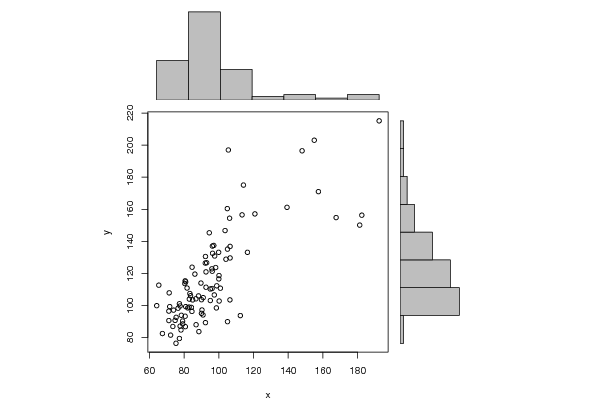Free Statistics
of Irreproducible Research!
Description of Statistical Computation | |||||||||||||||||||||||||||||||||||||||||||||||||||||||||||||||||||||||||||||||||||||||||||||||||||
|---|---|---|---|---|---|---|---|---|---|---|---|---|---|---|---|---|---|---|---|---|---|---|---|---|---|---|---|---|---|---|---|---|---|---|---|---|---|---|---|---|---|---|---|---|---|---|---|---|---|---|---|---|---|---|---|---|---|---|---|---|---|---|---|---|---|---|---|---|---|---|---|---|---|---|---|---|---|---|---|---|---|---|---|---|---|---|---|---|---|---|---|---|---|---|---|---|---|---|---|
| Author's title | |||||||||||||||||||||||||||||||||||||||||||||||||||||||||||||||||||||||||||||||||||||||||||||||||||
| Author | *Unverified author* | ||||||||||||||||||||||||||||||||||||||||||||||||||||||||||||||||||||||||||||||||||||||||||||||||||
| R Software Module | rwasp_correlation.wasp | ||||||||||||||||||||||||||||||||||||||||||||||||||||||||||||||||||||||||||||||||||||||||||||||||||
| Title produced by software | Pearson Correlation | ||||||||||||||||||||||||||||||||||||||||||||||||||||||||||||||||||||||||||||||||||||||||||||||||||
| Date of computation | Mon, 20 Oct 2008 13:15:50 -0600 | ||||||||||||||||||||||||||||||||||||||||||||||||||||||||||||||||||||||||||||||||||||||||||||||||||
| Cite this page as follows | Statistical Computations at FreeStatistics.org, Office for Research Development and Education, URL https://freestatistics.org/blog/index.php?v=date/2008/Oct/20/t1224530207xgtjac5mcq9d89i.htm/, Retrieved Mon, 30 Jun 2025 22:19:51 +0000 | ||||||||||||||||||||||||||||||||||||||||||||||||||||||||||||||||||||||||||||||||||||||||||||||||||
| Statistical Computations at FreeStatistics.org, Office for Research Development and Education, URL https://freestatistics.org/blog/index.php?pk=17936, Retrieved Mon, 30 Jun 2025 22:19:51 +0000 | |||||||||||||||||||||||||||||||||||||||||||||||||||||||||||||||||||||||||||||||||||||||||||||||||||
| QR Codes: | |||||||||||||||||||||||||||||||||||||||||||||||||||||||||||||||||||||||||||||||||||||||||||||||||||
|
| |||||||||||||||||||||||||||||||||||||||||||||||||||||||||||||||||||||||||||||||||||||||||||||||||||
| Original text written by user: | |||||||||||||||||||||||||||||||||||||||||||||||||||||||||||||||||||||||||||||||||||||||||||||||||||
| IsPrivate? | No (this computation is public) | ||||||||||||||||||||||||||||||||||||||||||||||||||||||||||||||||||||||||||||||||||||||||||||||||||
| User-defined keywords | |||||||||||||||||||||||||||||||||||||||||||||||||||||||||||||||||||||||||||||||||||||||||||||||||||
| Estimated Impact | 180 | ||||||||||||||||||||||||||||||||||||||||||||||||||||||||||||||||||||||||||||||||||||||||||||||||||
Tree of Dependent Computations | |||||||||||||||||||||||||||||||||||||||||||||||||||||||||||||||||||||||||||||||||||||||||||||||||||
| Family? (F = Feedback message, R = changed R code, M = changed R Module, P = changed Parameters, D = changed Data) | |||||||||||||||||||||||||||||||||||||||||||||||||||||||||||||||||||||||||||||||||||||||||||||||||||
| F [Back to Back Histogram] [Omzet industrie v...] [2008-10-20 18:44:01] [e340b5273efb4d885d02142e6a0fc74b] F RMPD [Pearson Correlation] [Correlation omzet...] [2008-10-20 19:08:40] [e340b5273efb4d885d02142e6a0fc74b] F D [Pearson Correlation] [correlation inves...] [2008-10-20 19:15:50] [0ee5a336ab8a2fb221821eda2df0f830] [Current] F D [Pearson Correlation] [correlation omzet...] [2008-10-20 19:20:53] [e340b5273efb4d885d02142e6a0fc74b] F D [Pearson Correlation] [correlaation omze...] [2008-10-20 19:26:14] [e340b5273efb4d885d02142e6a0fc74b] | |||||||||||||||||||||||||||||||||||||||||||||||||||||||||||||||||||||||||||||||||||||||||||||||||||
| Feedback Forum | |||||||||||||||||||||||||||||||||||||||||||||||||||||||||||||||||||||||||||||||||||||||||||||||||||
Post a new message | |||||||||||||||||||||||||||||||||||||||||||||||||||||||||||||||||||||||||||||||||||||||||||||||||||
Dataset | |||||||||||||||||||||||||||||||||||||||||||||||||||||||||||||||||||||||||||||||||||||||||||||||||||
| Dataseries X: | |||||||||||||||||||||||||||||||||||||||||||||||||||||||||||||||||||||||||||||||||||||||||||||||||||
80,7 86,9 105 95,1 100,2 182,4 90 78,2 97,4 84,2 90 100,9 84,5 92,3 90,3 91 96,4 167,6 88,5 67,5 83 77,7 80,6 96,1 71,2 75,3 90,9 106,4 96,3 181,2 65,4 72,2 80,4 77,7 76,5 100,1 73,5 77,3 98,6 112,4 77,3 139,3 75,4 64,2 86,8 79,1 71,7 100 82,1 74,8 92,3 83,3 83,7 148 71,4 71,2 84,6 80,9 80,6 105,5 79,2 78,4 92,6 88,3 98,2 157,4 73,9 80,9 93 84,9 96,2 106,5 81,7 82,9 96 92,6 116,5 155 95,1 86,2 105 89,7 97,1 120,8 92,2 98,8 104,1 106,5 113,4 192,4 103,6 97,6 99,9 106,2 104,9 114,2 94,5 | |||||||||||||||||||||||||||||||||||||||||||||||||||||||||||||||||||||||||||||||||||||||||||||||||||
| Dataseries Y: | |||||||||||||||||||||||||||||||||||||||||||||||||||||||||||||||||||||||||||||||||||||||||||||||||||
86,7 87,9 89,8 103 102,7 156,3 95 84,6 106,5 98,7 103,5 110,7 96,2 89,2 97,1 104,8 132,5 154,8 83,6 82,4 103,9 87 93,2 110,5 96,4 76,3 94 103,4 137 150,1 112,6 81,4 113,6 99,6 98,2 118,6 86,8 79,3 98,4 93,6 101 161,2 92,5 99,8 104,1 90,2 99,2 116,5 98,4 90,6 130,5 107,4 106 196,5 107,8 90,5 123,8 114,7 115,3 197 88,4 93,8 111,3 105,9 123,6 171 97 99,2 126,6 103,4 121,3 129,6 110,8 98,9 122,8 120,9 133,1 203,1 110,2 119,5 135,1 113,9 137,4 157,1 126,4 112,2 128,8 136,8 156,5 215,2 146,7 130,8 133,1 154,4 160,4 175,1 145,3 | |||||||||||||||||||||||||||||||||||||||||||||||||||||||||||||||||||||||||||||||||||||||||||||||||||
Tables (Output of Computation) | |||||||||||||||||||||||||||||||||||||||||||||||||||||||||||||||||||||||||||||||||||||||||||||||||||
| |||||||||||||||||||||||||||||||||||||||||||||||||||||||||||||||||||||||||||||||||||||||||||||||||||
Figures (Output of Computation) | |||||||||||||||||||||||||||||||||||||||||||||||||||||||||||||||||||||||||||||||||||||||||||||||||||
Input Parameters & R Code | |||||||||||||||||||||||||||||||||||||||||||||||||||||||||||||||||||||||||||||||||||||||||||||||||||
| Parameters (Session): | |||||||||||||||||||||||||||||||||||||||||||||||||||||||||||||||||||||||||||||||||||||||||||||||||||
| Parameters (R input): | |||||||||||||||||||||||||||||||||||||||||||||||||||||||||||||||||||||||||||||||||||||||||||||||||||
| R code (references can be found in the software module): | |||||||||||||||||||||||||||||||||||||||||||||||||||||||||||||||||||||||||||||||||||||||||||||||||||
bitmap(file='test1.png') | |||||||||||||||||||||||||||||||||||||||||||||||||||||||||||||||||||||||||||||||||||||||||||||||||||





